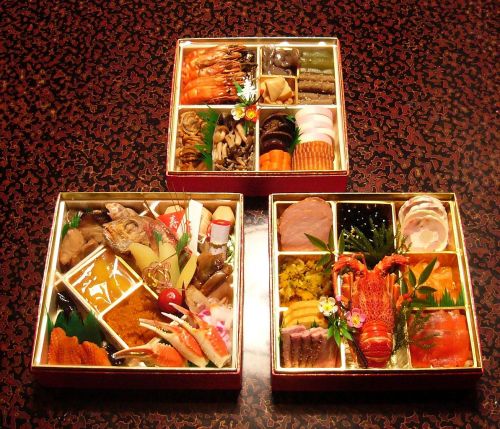Shogatsu
Shogatsu is the Japanese New Year celebration. Since 1873 it has been celebrated on the 1st of January. The only exception to this rule is the island of Okinawa where people still observe the New Year according to Chinese lunar calendar.
Culinary aspect of Shogatsu is quite interesting. On this day the Japanese traditionally eat group of dishes known as osechi-ryōri or just osechi. There are many regional differnces considering which dishes will be used. Here are just few of them - kobumaki (kombu rolls), kamaboko (fish cake), konbu (cooked sea weed), ebi (skewered prawns), tazukuri (dried sardines in soy sauce) etc.
 Osechi-ryōri
Osechi-ryōri
Each dish has its symbolic meaning. Tazukuri, for example, is the symbol of rich harvest. Osechi dishes are packed in the special jūbako box.
 Shimekazari
Shimekazari
Shimekazari is a Japanese New Year decoration that is traditionally put on the entrance door. It includes two basic elements - a small rope (made of rice straw) and several paper strips called "shide". Each decoration also includes good omens. Some of them are "daidai" (Japanese bitter orange), lobster and thin pine branches.
People in Japan have the New year postcards called “nengajo”. They start sending them in the mid-December. Traditionally they should be delivered on the 1st of January. In Japanese Buddhist temples the new year is started by performing the ritual known as “Joya no Kane”.
During this ritual the new year is welcomed with 108 bell chimes. Each of these chimes takes away troubles and suffering of the past year. On the first, second and third day of new year people visit temples and shrines. This visit is called “Hatsumode”. Many people arrive dressed in colourful kimono. First they make money offerings and ring the main temple bell. Then they pray for the luck and health in new year.